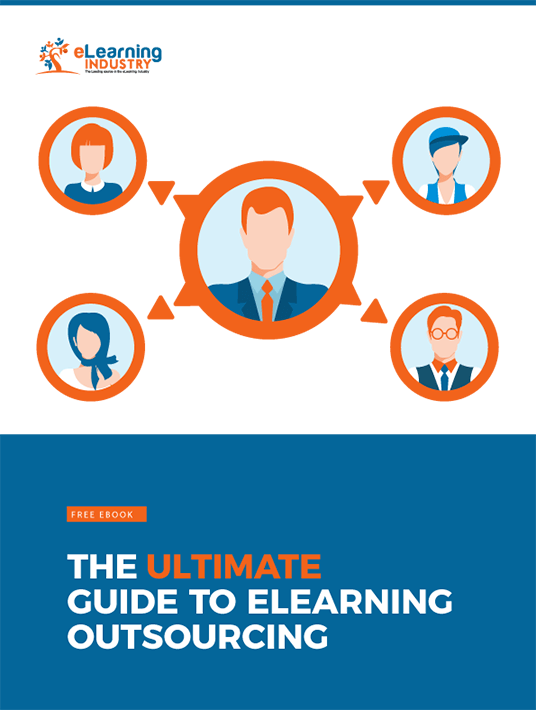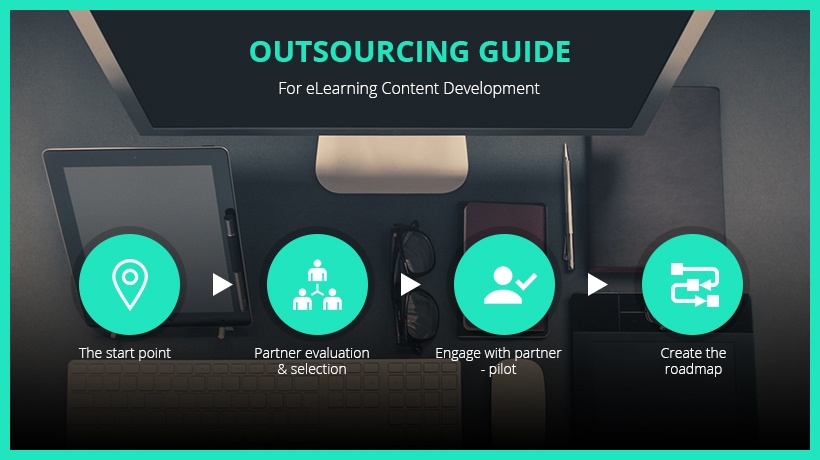How To Prepare For eLearning Project Outsourcing
The global economy has taken a massive hit, which has led to lay-offs and budget redistribution. Outsourcing key operations, such as your corporate eLearning program, is a helpful way to stem organizational cash flow. It allows teams to focus their energy and skill where it is most needed. At the same time, it redirects specialized tasks like online training, channelling it towards proven experts in that field. But eLearning outsourcing can generate a whole new set of challenges. Dealing with a team that has different goals, targets, and ways of working can take some adjusting. Let’s look at 5 ways to take the stress out of the process of outsourcing your next eLearning project by preparing well in advance.

1. Cross-Check All Reviews And Recommendations
As you begin your search for an eLearning outsourcing partner, you should ask around. Gather information from reliable sources. Identify the kind of online training you require, then ask your industry partners for suggestions. They have probably worked on similar eLearning projects and they can recommend some viable options. Once you have information from sources that you know, follow up with independent sources. Take a look at some of their past corporate eLearning courses to gauge the quality. Look for testimonials and, if possible, request a demo. Double-check the certification and accreditation of the training institutes they're affiliated with. Although these are online courses, don’t restrict yourself to online search engines. Make some phone calls to follow-up and verify their references.
2. Get Everything In Writing
This might sound like a contradiction to the last point, but it isn’t. Verbal agreements aren’t always binding, because they come down to one person’s word against another's. There may have been errors and miscommunications that can have far-reaching consequences. Make sure that all pertinent matters are re-affirmed through email, so that there’s a trackable paper trail. Things like the length of the corporate eLearning course, specific subject matter, or payment terms must all be in writing. The designated contact person and agreed timelines must be written down as well. As discussions approach a close, it’s important to have a detailed contract that takes into account all contentious issues. It’s always a good idea to have contracts drafted by a legal team. They will ensure every crucial detail is covered.
3. Identify eLearning Project Managers On Both eLearning Teams
Bureaucracy is sometimes more trouble than it’s worth. It can slow progress and cause unnecessary clogs in any system. That said, an eLearning outsourcing project requires a clear chain of command in order to run with precision. The managerial team doesn’t need to be large. The smaller, the better. Ideally, there should be one eLearning Project Manager from either end, in charge of each eLearning team. These two managers should create rapport and have easy access to each other. Have a clear process for communication between the two eLearning teams. This way, it’s easier to monitor progress and handle any issues that may arise. These two positions should be carefully selected. Ensure that they have good people skills, so that they work well with their teams and with each other. They need to be cognizant that this is an equal partnership, not a pairing of superiors and subordinates.
4. Thoroughly Test Your Current LMS
eLearning is a technology-driven enterprise. While the human element is important, it’s the tech side of things that has overarching control. Selecting the right online instructors and pairing them with corporate learners is a fairly manageable task. However, once corporate learners begin the online training course, interaction will largely flow between them and their device. Make sure your Learning Management System undergoes extreme troubleshooting to identify and resolve any issues that may arise. Create a checklist to focus your efforts. For example, concentrate on what emplooyees should do in case of a crash or system failure. They should know how to get in touch with online facilitators or IT support staff, especially when systems are down. It should be easy for them to navigate the corporate eLearning course and review previous online training modules. Test your LMS from the corporate learner's perspective. Having that fresh, inexperienced eye will help to identify potential eLearning challenges.
5. Gather Your Existing Online Training Resources
In some cases, you may already have online training resources on hand. For example, webinars you've hosted in the past, or online training tutorials and videos you used in previous corporate eLearning courses. Even printed materials that were intended for face-to-face training can be repurposed. Take stock of the online training assets you already have and offer relevant resources to your eLearning outsourcing partner. They may be able to reuse the online training content for your new eLearning project or draw on them for inspiration. For instance, get a feel for the layout and conversational tone you prefer to use in your eLearning course design. Another important asset to hand over is audience research, LMS reports, and feedback results.
Making the decision to outsource your corporate eLearning course is only the first step in your process. You need a few more checks and balances to make sure your online training runs smoothly. Look around carefully to ensure you have chosen the right eLearning outsourcing partner. Verify referrals to keep everything above board. All agreements, contracts, and deadlines must be done in writing for accountability and reporting purposes. Have a clear structure on both your in-house and the outsourced eLearning team, so that everyone knows who’s in charge. Last, but not least, don't forget to test your LMS and try to identify as many potential snafus as possible. All these details will help everything go according to plan.
Want to learn more tips about the benefits of eLearning outsourcing? Download the Free eBook: The Ultimate Guide To eLearning Outsourcing to discover how to ensure a smooth collaboration with your eLearning content provider, how to prepare ahead of time, and how to set a realistic budget for your outsourced eLearning project.







